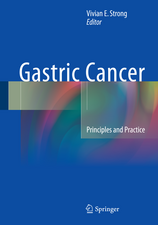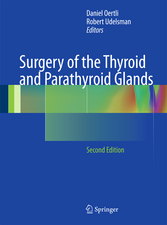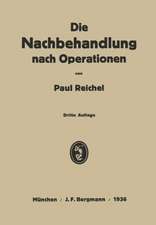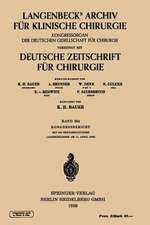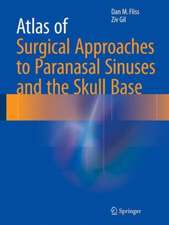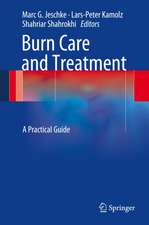Foot Surgery Viewed Through the Prism of Comparative Anatomy – From Normal to Useful
Autor C Cazeauen Limba Engleză Hardback – 17 dec 2020
Preț: 1021.57 lei
Preț vechi: 1075.34 lei
-5% Nou
Puncte Express: 1532
Preț estimativ în valută:
195.54€ • 212.47$ • 164.36£
195.54€ • 212.47$ • 164.36£
Carte tipărită la comandă
Livrare economică 22 aprilie-06 mai
Preluare comenzi: 021 569.72.76
Specificații
ISBN-13: 9781786306043
ISBN-10: 1786306042
Pagini: 208
Dimensiuni: 165 x 242 x 17 mm
Greutate: 0.46 kg
Editura: ISTE Ltd.
Locul publicării:Hoboken, United States
ISBN-10: 1786306042
Pagini: 208
Dimensiuni: 165 x 242 x 17 mm
Greutate: 0.46 kg
Editura: ISTE Ltd.
Locul publicării:Hoboken, United States
Cuprins
Foreword ix
Introduction xiii
Chapter 1. Comparison: The Key to Understanding Human Specificity 1
1.1. Comparison, a source of clarity 1
1.2. Different models of the foot and ankle throughout evolution 1
1.2.1. Evolution of the chiridial limb 2
1.2.2. The human model 6
1.2.3. Comparative functional anatomy 9
1.3. Different functional anatomy models of bipedalism, from turkeys to humans and great apes 10
1.3.1. Challenges in terms of phylogeny 10
1.3.2. Definition of bipedalism 11
1.3.3. Different bipeds 12
1.3.4. Conclusion 23
1.4. Permanent terrestrial human bipedalism, explained through the model of the bi-articular muscles 23
1.4.1. Introduction 23
1.4.2. Kinematic analysis 24
1.4.3. Dynamic analysis (Figure 1.22) 26
1.4.4. Electromyography 28
1.4.5. Surgical treatment 31
1.4.6. Conclusion 32
1.5. Alternating dorsal/plantar flexion of the ankle; comparison with the great ape 32
1.5.1. Kinematic analysis 33
1.5.2. Dynamic analysis 36
1.5.3. Conclusion 36
1.6. Dorsiflexion location (Figure 1.15) 37
Chapter 2. The Aim of Surgery: Restore Function 39
2.1. Introduction 39
2.1.1. The notion of sacrifice 39
2.1.2. Normal 39
2.1.3. Useful 40
2.1.4. Direct surgical implications 41
2.2. Hallux valgus 42
2.2.1. Pathophysiology 42
2.2.2. Normality/utility balance 45
2.3. Arthrodesis 48
2.3.1. The first cuneometatarsal joint (C1M1) 48
2.3.2. First metatarsophalangeal joint (MTP1) 52
2.4. Excessive mechanical pressure under the forefoot (second, third and fourth metatarsals - M2, M3 and M4, respectively) 55
2.4.1. Biomechanics and evolution 55
2.4.2. Pathophysiology 57
2.4.3. Surgical treatment 58
2.5. Plantar plate 60
2.5.1. Introduction 60
2.5.2. Plantar plate in primates 60
2.5.3. Anatomy 61
2.5.4. Biomechanics 64
2.5.5. Mechanical balance 66
2.5.6. Treatment 66
2.6. Release of gastrocnemius muscles 66
2.7. Claw toes (Figure 2.34) 67
2.7.1. Surgical alternatives 67
2.7.2. Anatomy reminder 69
2.7.3. Extension function 71
2.7.4. Flexor tendons: which priorities? 74
2.7.5. Unusual anastomose 78
2.7.6. Conclusion 79
2.8. Second ray syndrome 80
2.8.1. Medical and surgical considerations 80
2.8.2. Second metatarsal in human primates, non-human primates and fossil hominids 83
2.8.3. Treatment 94
2.8.4. Conclusion 95
2.9. Morton's neuroma 95
2.9.1. Introduction 95
2.9.2. Pathological anatomy review 95
2.9.3. Clinical consequence 97
2.9.4. Surgical options 97
2.9.5. Choosing between utility and normality 98
2.10. Appendix: anatomy and function of tendons 98
Chapter 3. Rapid Healing Through Immediate Use of the Operated Foot: A Purpose 101
3.1. Introduction 101
3.2. The need for a concept 102
3.3. New percutaneous and minimally invasive techniques 102
3.3.1. Development of percutaneous surgery 102
3.3.2. Principles of percutaneous surgery 103
3.3.3. Biomechanical translation of this new conceptual approach 105
3.3.4. Absence of pain 109
3.3.5. Immediate full weight bearing 110
3.3.6. Manipulations 111
3.3.7. Technological innovation 111
3.3.8. New role for postoperative dressings 112
3.3.9. Outpatient surgery 112
3.3.10. New work in anatomy 114
3.3.11. Conclusion 114
3.4. Biomechanics of stability 114
3.5. Pain and recovery 118
3.6. Forces and tissue growth 118
3.6.1. Introduction 119
3.6.2. Applicable forces 121
3.6.3. Mechanoreceptors - the starting point 130
3.6.4. Intracellular transmission: cytoskeleton and extracellular matrix 133
3.6.5. Intracellular biochemical reactions 137
3.6.6. Translation by physical elements 138
3.7. Conclusion 154
Conclusion 155
References 157
Index 177



